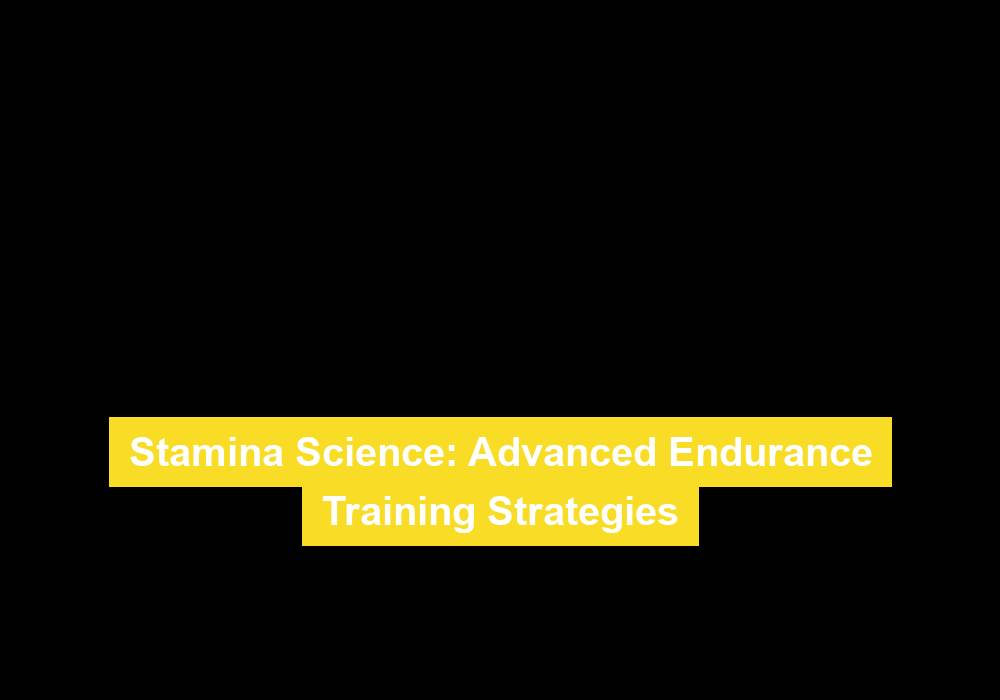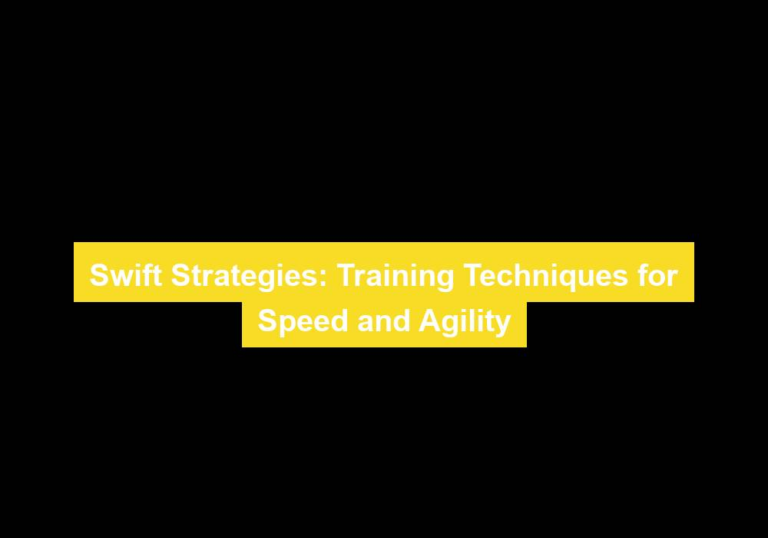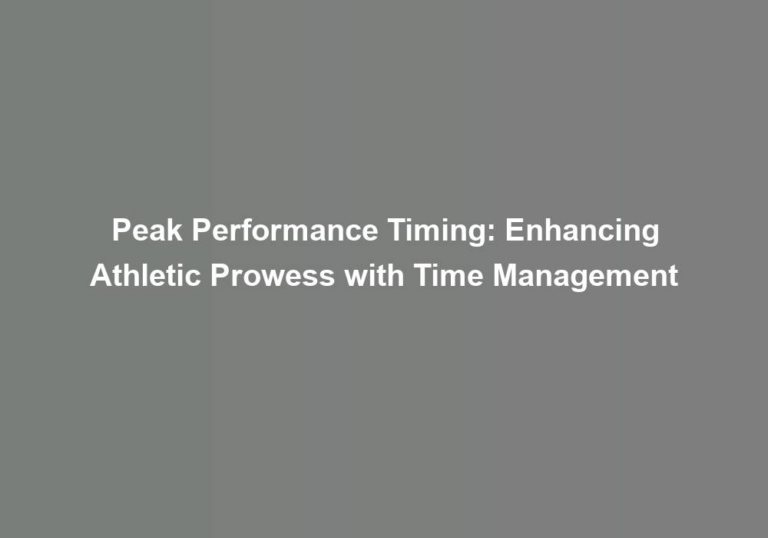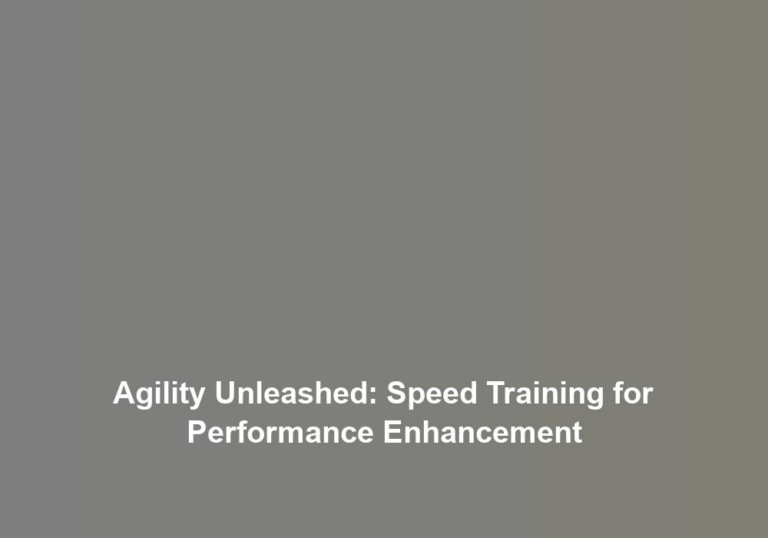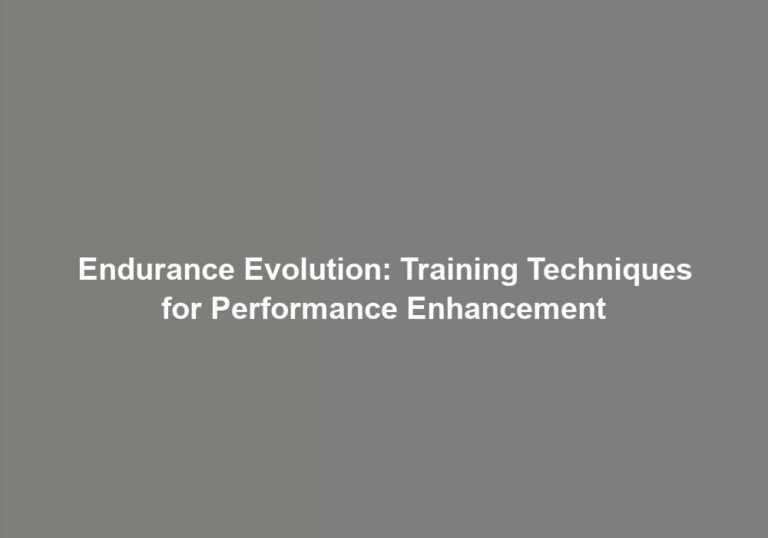Stamina Science: Advanced Endurance Training Strategies
So youG??ve been training for your first marathon and have hit a plateau in your performance despite increasing your mileage. Have you ever considered the role of advanced endurance training strategies in pushing past your limits? By exploring the latest research in endurance physiology and cutting-edge training methodologies, you can unlock new potential in your stamina and performance. But what if there were even more innovative techniques that could revolutionize your approach to endurance training?
Understanding Endurance Physiology
Understanding the physiology of endurance is essential for optimizing training programs and improving athletic performance. When it comes to endurance performance, muscle fatigue is a critical factor that can limit overall capabilities. Research has shown that muscle fatigue during prolonged exercise is multifactorial, involving both peripheral and central mechanisms. Peripheral fatigue occurs at the muscle level and is associated with factors such as metabolic byproducts, glycogen depletion, and disruptions in calcium ion regulation. On the other hand, central fatigue involves the central nervous system and can manifest as a decrease in the neural drive to muscles.
To enhance endurance performance, it is imperative to address both peripheral and central aspects of muscle fatigue. Training interventions can target peripheral fatigue by improving muscle oxidative capacity, enhancing metabolic waste clearance, and optimizing fuel utilization. Additionally, strategies aimed at reducing central fatigue, such as mental training and cognitive-behavioral techniques, can be integrated into training programs to mitigate the impact of the central nervous system on fatigue development.
Understanding the intricate interplay between peripheral and central mechanisms of muscle fatigue is crucial for devising comprehensive endurance training strategies. By integrating targeted interventions that address both physiological aspects, athletes can optimize their training programs to improve endurance performance and delay the onset of muscle fatigue, ultimately enhancing their overall athletic capabilities.
Advanced Training Methodologies
To optimize endurance performance and mitigate the impact of muscle fatigue, integrating advanced training methodologies is essential for addressing both peripheral and central aspects of fatigue development. When considering advanced training methodologies, the following strategies are crucial for maximizing training adaptations and enhancing endurance performance:
-
Periodization: Implementing a periodized training plan, which involves systematically varying the training workload and intensity, can optimize performance gains while minimizing the risk of overtraining and injury. This approach allows for strategic recovery periods and peak performance phases, leading to improved overall performance.
-
High-Intensity Interval Training (HIIT): Incorporating HIIT sessions into training programs can significantly enhance aerobic and anaerobic capacity, as well as oxygen utilization. HIIT involves alternating between short bursts of intense exercise and recovery periods, leading to improvements in cardiovascular function and muscular endurance.
-
Performance Psychology: Integrating psychological strategies such as visualization, goal setting, and mental toughness training can enhance an athleteG??s ability to tolerate discomfort and push through fatigue during prolonged endurance efforts. This mental resilience is a crucial component of advanced endurance training methodologies.
-
Altitude Training: Utilizing altitude training or simulated altitude environments can enhance oxygen utilization and aerobic capacity. Exposure to reduced oxygen levels can stimulate physiological adaptations that improve an athleteG??s ability to perform in low-oxygen environments, leading to enhanced endurance performance.
Nutritional Strategies for Stamina
Consider implementing evidence-based nutritional strategies to optimize stamina and support endurance training adaptations for peak performance. Performance-enhancing nutritional strategies play a crucial role in improving endurance and overall athletic performance. Proper hydration is fundamental for maintaining stamina and supporting the bodyG??s ability to adapt to the demands of endurance training.
Hydration strategies are vital for sustaining peak performance during endurance training. Dehydration can lead to a significant decrease in performance, as it impairs thermoregulation, cardiovascular function, and muscle metabolism. It is essential to consume an adequate amount of fluids before, during, and after training sessions to maintain optimal hydration levels. Additionally, incorporating electrolyte-rich drinks can help replace the sodium lost through sweat and support hydration.
Furthermore, optimizing nutrient intake can greatly enhance stamina and endurance. Carbohydrates are the primary fuel source for endurance activities, and consuming an adequate amount of carbohydrates before and during exercise can enhance performance. Additionally, adequate protein intake is crucial for supporting muscle repair and growth, which is essential for endurance athletes. Moreover, strategic timing of nutrient intake, such as consuming a carbohydrate-protein combination after training, can further support muscle recovery and adaptation.
Recovery and Adaptation Techniques
You need to implement active recovery methods and adaptation through nutrition to optimize your endurance training. Research has shown that active recovery techniques, such as light aerobic exercises and massage, can significantly reduce muscle soreness and improve performance. Additionally, the right nutritional strategies can aid in the adaptation process, helping your body better cope with the demands of endurance training.
Active Recovery Methods
Active recovery methods play a crucial role in enhancing post-exercise recovery and facilitating physiological adaptations. Utilizing regenerative techniques such as foam rolling, massage, and stretching can aid in muscle recovery, reducing soreness and improving flexibility. Endurance recovery is vital for performance enhancement, and incorporating techniques like low-intensity aerobic exercise and yoga can expedite the restoration of physiological functions. Additionally, compression garments and hydrotherapy have been shown to effectively reduce muscle fatigue and enhance recovery. These methods can help maintain training consistency and reduce the risk of overtraining, ultimately contributing to improved endurance and overall performance.
Adaptation Through Nutrition
Nutrition plays a pivotal role in facilitating post-exercise recovery and promoting physiological adaptations, complementing the active recovery methods previously discussed. Nutritional timing and macronutrient balance are crucial in optimizing endurance training outcomes. Consuming the right nutrients at specific times can enhance the bodyG??s ability to recover and adapt to training stress, ultimately improving performance. Below is a table outlining key considerations for nutritional timing and macronutrient balance:
| Nutritional Timing | Macronutrient Balance |
|---|---|
| Pre-exercise: | Carbohydrates: |
| During exercise: | Proteins: |
| Post-exercise: | Fats: |
| Evening meal: | Hydration: |
| Before bed: | Micronutrients: |
Incorporating High-Intensity Intervals
You should consider incorporating high-intensity intervals (HIIT) into your endurance training regimen. Research has shown that HIIT offers numerous benefits, including improved aerobic and anaerobic fitness, increased calorie burn, and enhanced cardiovascular health. Various HIIT training protocols exist, each with its own unique structure and potential impact on performance.
Benefits of HIIT
Incorporating high-intensity intervals, also known as HIIT, into your endurance training regimen has been shown to significantly improve cardiovascular fitness and maximize calorie burn in a time-efficient manner. Research trends in HIIT benefits have revealed compelling data supporting its effectiveness. Here are some key benefits of incorporating HIIT into your training:
- Enhanced cardiovascular function: HIIT has been found to improve heart health and increase the efficiency of oxygen use during exercise.
- Increased calorie burn: HIIT workouts can help you burn more calories in a shorter amount of time compared to traditional endurance training.
- Improved metabolic health: HIIT has been linked to better insulin sensitivity and improved metabolic function.
- Time-efficient workouts: HIIT allows you to achieve significant fitness gains in shorter training sessions, making it ideal for individuals with busy schedules.
These benefits underscore the value of integrating HIIT into your endurance training routine.
HIIT Training Protocols
Utilizing various high-intensity interval training (HIIT) protocols can optimize endurance performance and contribute to overall fitness improvements. HIIT benefits are well-documented, with research showing significant performance enhancement and physiological adaptations. When implementing HIIT protocols, itG??s crucial to track performance to monitor progress and adjust training accordingly. Below are some common HIIT protocols used for endurance training:
| Protocol | Description | Benefits |
|---|---|---|
| Tabata | 20 seconds of maximal effort, 10 seconds rest | Improved anaerobic capacity |
| Gibala Method | 3 minutes high intensity, 3 minutes active rest | Enhanced aerobic performance |
| Little Method | 60 seconds high intensity, 75 seconds active rest | Increased VO2 max and endurance |
These HIIT protocols offer diverse benefits and can be tailored to individual performance tracking, making them essential for endurance athletes seeking optimal results.
Cutting-Edge Endurance Technology
Cutting-edge endurance technology has revolutionized training methods and performance monitoring for athletes seeking to optimize their training and improve their results. This technology has not only enhanced the ability to track and analyze endurance performance but has also provided valuable insights for personalized training strategies. Here are some of the most impactful advancements in endurance technology:
-
Wearable Technology: Wearable devices such as fitness trackers, heart rate monitors, and GPS watches have become essential tools for endurance athletes. These devices provide real-time data on performance metrics, including heart rate, pace, distance, and elevation. They allow for precise monitoring of training intensity and volume, enabling athletes to make informed adjustments to their workouts.
-
Biometric Analysis: Advanced biometric analysis tools offer comprehensive insights into an athleteG??s physiological responses during training and competition. These tools can measure parameters such as oxygen consumption, lactate threshold, and running economy, providing valuable data for optimizing training programs and race strategies.
-
Virtual Training Platforms: Virtual reality and augmented reality platforms have transformed the way athletes train, offering immersive and interactive experiences that simulate real-world race conditions. These platforms provide a valuable training environment for athletes to practice pacing, navigation, and mental preparation.
-
Recovery Technology: Innovations in recovery technology, including compression garments, cold therapy, and percussion massage devices, have significantly improved post-training and post-race recovery. These technologies aid in reducing muscle soreness, inflammation, and fatigue, allowing athletes to maintain consistent training quality.
These advancements in endurance technology have not only enhanced performance monitoring but have also played a crucial role in optimizing training methodologies and overall athletic potential.
Conclusion
So, have you considered how these advanced endurance training strategies can take your performance to the next level? With a deeper understanding of endurance physiology, cutting-edge training methodologies, and nutritional and recovery techniques, you have the tools to optimize your stamina. Incorporating high-intensity intervals and leveraging the latest endurance technology can further enhance your training. Are you ready to push your limits and achieve peak endurance performance?

